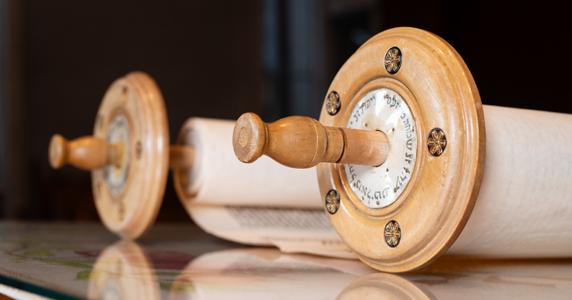 Rudolf Buchbinder és a Nemzeti Filharmonikus Zenekar • 2.2
Rudolf Buchbinder és a Nemzeti Filharmonikus Zenekar • 2.2
ÁPRILIS 7. | 19.30
Müpa – Bartók Béla Nemzeti Hangversenyterem Müpa Budapest – Béla Bartók National Concert Hall
Beethoven: 1. (C-dúr) zongoraverseny • Piano Concerto No. 1 in C major, op. 15
I. Allegro con brio
II. Largo
III. Rondo. Allegro scherzando
szünet • interval
Beethoven: 5. (Esz-dúr) zongoraverseny • Piano Concerto No. 5 in E-flat major, op. 73
I. Allegro
II. Adagio un poco moto
III. Rondo. Allegro
Közreműködik • Featuring: Nemzeti Filharmonikus Zenekar • Hungarian National Philharmonic Orchestra
Zongorán közreműködik és vezényel • Featuring on piano and conductor: Rudolf BUCHBINDER
For the English version, see page 5.
Ludwig van Beethoven: 1. (C-dúr) zongoraverseny, op. 15
Beethoven első akadémiája előtt a bécsi zenebarátokat olyasféle izgalom kerítette hatalmába, mint amilyen Mozart másfél évtizeddel korábbi akadémiáit kísérte, hiszen Beethoven – Mozart példáját követve – zeneszerzőként és zongoristaként is a publikum elé állt. A Burgtheater közönsége Mozart- és Haydn-művek társaságában egy régóta várt szimfóniát, egy szeptettet és a néhány évvel korábban szerzett C-dúr zongoraversenyt hallgathatta meg. Az egykori plakát egy nagy szimfóniát ígért „a néhai Mozart karnagy úrtól” (valószínű, hogy a g-moll szimfónia szólalt meg), Haydnt pedig az ekkor rendkívül népszerű Teremtés egyik áriája, illetve egy duettje képviselte. Beethoven nem véletlenül tervezte meg így a hangverseny programját: világossá tette, hogy kikhez méri magát. A C-dúr zongoraverseny mozarti inspirációja félreismerhetetlen – de a 18. század végén egy Beethovenhez hasonló kaliberű zongorista-zeneszerzőnek lehetett-e egyáltalán más mintája, mint Mozart?
Ludwig van Beethoven: 5. (Esz-dúr) zongoraverseny, op. 73
Az 1809–1810-ben komponált Esz-dúr zongoraverseny (Beethoven utolsó darabja ebben a műfajban) „szándékolt nehézségei” a mai hallgató számára talán kevésbé feltűnőek, bár a méretezés léptéke – különösen az első tételé – manapság is a zenei intellektus próbakövének számít. A mű minden elemzője rámutatott, hogy a kompozíció legközelebbi rokona az azonos hangnemű 3. (Eroica) szimfónia, s miként a szimfónia, úgy a versenymű is a francia forradalom eszmevilágához, illetve Napóleon személyéhez kapcsolódik – nem lehet véletlen, hogy angol nyelvterületen a kompozícióhoz elválaszthatatlanul hozzátapadt az „Emperor” melléknév. Ám a zongoraversenyből feltűnően hiányzik Beethoven „hőskoncepciójának” lényegi része, a hős elkerülhetetlen pusztulásának és magasztos búcsúztatásának gondolata, melyet korábban a 3. szimfóniában (1803) vagy az op. 26-os Asz-dúr szonátában (1801) is egy-egy gyászindulóban fogalmazott meg a szerző.
Az Esz-dúr zongoraverseny már jóval az 1811 novemberében tartott lipcsei ősbemutató előtt (szólista: Friedrich Schneider) megjelent nyomtatásban. Beethoven olyan képességű előadóra gondolva dolgozta ki a zongoraszólamot, mint Schneider vagy Czerny. Mindent aprólékosan rögzített: artikulációt, dinamikát, pedálhasználatot, hangszínt, kifejezést. Még a cadenzát is megkomponálta, illetve – mint az első tétel végén – szöveges instrukció jelzi, ha éppen „nincs cadenza, és azonnal kötni kell a következő részhez”.
Rudolf Buchbinder
Korunk egyik legendás előadóművésze, Rudolf Buchbinder több mint 60 éves pályafutása során egyedülálló módon ötvözte játékában az elmélyültséget és a spontaneitást, a hagyománytiszteletet és az újítást, a kottahűséget és az interpretáció szabadságát. Különösen Ludwig van Beethoven műveinek értelmezésével állított fel különösen magas mércét, a zeneszerző 32 zongoraszonátáját több mint 60 alkalommal adta már elő ciklusokba rendezve. A Deutsche Grammophon 2021ben, a zongoraművész 75. születésnapjára készülve ünnepi kiadásban adta közre Buchbinder Beethoven-szonátafelvételeit és az öt zongoraversenyt. Utóbbiakat a 2019/2020-as koncertszezonban a bécsi Musikvereinban rögzítették. Beethoven születésének 250. évfordulója alkalmából Buchbinder egy új Diabelli-variációkat tartalmazó ciklust kezdeményezett. A zeneszerző korszakalkotó művének keletkezéstörténetéhez hasonlóan Lera Auerbach, Brett Dean, Toshio Hosokawa, Christian Jost, Brad Lubman, Philippe Manoury, Max Richter, Rogyion Scsedrin, Johannes Maria Staud, Tan Dun és Jörg Widmann személyében tizenegy különböző korú és származású kortárs zeneszerzőt kért fel, hogy írják meg saját variációikat a Beethoven által feldolgozott témára. Az új Diabelli-variációkat a világ tizenegy koncertszervezője rendelte meg, a projektet az Ernst von Siemens Zenei Alapítvány támogatta, a ciklust természetesen Buchbinder mutatta be.
Nemzeti Filharmonikus Zenekar
A Nemzeti Filharmonikus Zenekar jogelődjét Székesfővárosi Zenekar néven hozták létre 1923-ban. Ferencsik János több mint három évtizedet, később Kobajasi Kenicsiró tíz évet töltött az együttes élén. Őket Kocsis Zoltán követte 1997-ben, akinek keze alatt a megújuló együttes repertoárja olyan hiánypótló művekkel bővült, mint Richard Strauss, Debussy, Ravel, Schönberg, valamint 20. századi és kortárs magyar szerzők alkotásai, Bartók zenéje pedig különösen hangsúlyosan érvényesült műsorpolitikájukban. Olyan neves helyszíneken és fesztiválokon léptek fel, mint a New York-i Avery Fisher Hall, a tokiói Suntory Hall, a birminghami Symphony Hall, az athéni Megaron, a bukaresti Enescu Fesztivál, a Colmari és a Kanári-szigeteki Fesztivál. Kocsis Zoltán halála után 2020 augusztusáig Hamar Zsolt látta el a zeneigazgatói feladatokat, Vashegyi György személyében pedig 2022 októbere óta van újra főzeneigazgatója a zenekarnak.

Ludwig van Beethoven: Piano Concerto No. 1 in C major, Op. 15
Before Beethoven’s first academy, Viennese music lovers were gripped by the same kind of excitement that had accompanied Mozart’s academies a decade and a half earlier, as Beethoven, following Mozart’s example, took to the stage both as composer and as a pianist. Along with works by Mozart and Haydn, the concert at the Burgtheater featured a long-awaited symphony, a septet, and Piano Concerto No. 1 in C major, which had been composed a few years earlier. The poster advertising the event promised a great symphony by ‘the late conductor Mr Mozart’ (probably Symphony No. 40 in G minor), while Haydn was represented by an aria and a duet from The Creation, which was very popular at the time. With this programme, Beethoven wanted to declare who he was measuring himself against. Mozart is unmistakably the source of inspiration for Piano Concerto No. 1 in C major – but could a pianist and composer of Beethoven’s calibre have a model other than Mozart at the end of the 18th century?
Ludwig van Beethoven: Piano Concerto No. 5 in E-flat major, Op. 73
The ‘intentional difficulties’ of Piano Concerto No. 5 in E flat major (Beethoven’s last work in the genre, composed in 1809–1810), are perhaps less striking to the modern listener, although the scaling – especially that of the first movement – is still a touchstone of musical intellect. All analysts of the work have pointed out that the closest relative of the composition is Symphony No. 3 (Eroica), which is in the same key, and both are linked to the ideology of the French Revolution and the person of Napoleon, so it is no coincidence that in English-speaking countries the concerto has the sobriquet ‘Emperor.’ However, conspicuously absent from the piano concerto is an essential part of Beethoven’s ‘concept of the hero,’ the idea that he must fall and deserves an exalted farewell – something expounded earlier in a funeral march each in Symphony No. 3 (1803) and Sonata No. 12 in A flat major (1801). In contrast to Beethoven’s former practice, Piano Concerto No. 5 in E flat major had appeared in print well before the world premiere, which took place in Leipzig in November 1811, with Friedrich Schneider at the piano. When writing the piano part, Beethoven had a player in mind with the abilities of Schneider or Czerny, and he meticulously noted every detail, the articulation, the dynamics, the pedal usage, every timbre and expression. He even composed the cadenza, or made instructions in its absence, as at the end of the first movement: no cadenza and the next part must be connected without a pause.
Rudolf Buchbinder
Over a career of more than 60 years, Rudolf Buchbinder has become one of the legendary performers of our time by creating a unique blend of concentration and spontaneity, a respect for tradition and an eagerness to innovate, an adherence to the written music and the freedom of interpretation. He has set the bar particularly high with his interpretations of Ludwig van Beethoven’s works, having performed the composer’s 32 piano sonatas in cycles more than 60 times. In 2021, Deutsche Grammophon celebrated the pianist’s 75th birthday with a special edition of his performance of Beethoven’s sonatas and the five piano concertos. The latter were recorded at Vienna’s Musikverein, during the 2019/2020 concert season. To mark the 250th anniversary of Beethoven’s birth, Buchbinder has initiated a cycle with new Diabelli Variations. In the vein of the original set, for which Beethoven contributed his variations, Buchbinder requested eleven composers of different ages and nationalities to write their own variations on the theme Beethoven developed. Lera Auerbach, Brett Dean, Toshio Hosokawa, Christian Jost, Brad Lubman, Philippe Manoury, Max Richter, Rodion Shchedrin, Johannes Maria Staud, Tan Dun and Jörg Widmann were commissioned by eleven concert promoters around the world, with support from the Ernst von Siemens Music Foundation. The new Diabelli Variations were of course premiered by Buchbinder.
Hungarian National Philharmonic Orchestra
The predecessor of the National Philharmonic Orchestra was founded in 1923 as the Metropolitan Orchestra. János Ferencsik stood at its helm for three decades, while Ken’ichiro Kobayashi was music director for ten years. Zoltán Kocsis took over in 1997, and under his leadership the repertoire of the renewed ensemble was expanded with works by Richard Strauss, Debussy, Ravel, Schoenberg, 20th-century and contemporary Hungarian composers, with Bartók’s music becoming particularly prominent in their programming. The leading venues and festivals they have performed at include New York’s Avery Fisher Hall, Tokyo’s Suntory Hall, Birmingham’s Symphony Hall, the Megaron in Athens, the Enescu Festival in Bucharest, the Festivals of Colmar and the Canary Islands. After the death of Zoltán Kocsis, Zsolt Hamar fulfilled his duties until August 2020, and György Vashegyi has been music director of the orchestra since October 2022.



